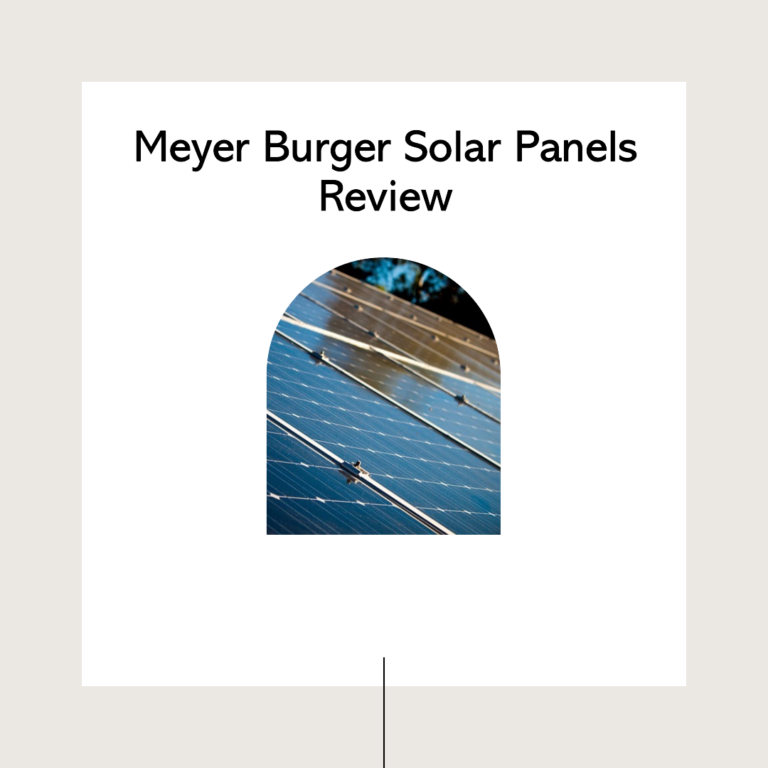Solar panels are a fantastic investment for both the environment and your wallet. However, like all technologies, they can encounter issues. One such problem is the appearance of snail trails. But what are they, and how can they be addressed?
To deal with snail trails on solar panels, regularly clean the panels, apply protective coatings, and invest in high-quality panels from reputable manufacturers. Periodic professional assessments can also help address and prevent the issue.
Now let’s really get our hands dirty on this subject, to ensure that your solar panels always perform at their optimal level!
What are Snail Trails On Solar Panels?

Snail trails, a term that might evoke images of garden pests, are in fact a phenomenon associated with solar panels.
Contrary to what the name might suggest, these trails have nothing to do with actual snails. Instead, they refer to a series of visible lines or patterns that can appear on the surface of solar panels, often resembling the silvery trail left behind by a snail, hence the name.
The formation of snail trails is a result of a complex interaction between various materials used in the construction of solar panels. Here’s a more detailed breakdown:
Causes of Snail Trails
The primary culprits behind snail trails are the silver electrodes used in the solar cells and moisture. When moisture infiltrates the solar panel, it can react with the silver electrodes, leading to the formation of these distinct patterns.
Factors like poor sealing, environmental conditions, or even manufacturing defects can make some panels more susceptible to this issue.
Impact on Solar Panel Efficiency
Aesthetically, snail trails might be a concern for some solar panel owners due to their prominent appearance. However, from a performance perspective, the impact of snail trails on the efficiency of solar panels is minimal in most cases.
That said, their presence can sometimes be indicative of other potential issues, such as moisture ingress, which might have more significant implications for the panel’s longevity and performance.
How to Deal With Snail Trails on Solar Panels
Addressing snail trails is essential not just for the visual appeal of your solar panels but also to ensure their optimal performance and longevity.
Here are some strategies and solutions:
Regular Maintenance and Cleaning
One of the simplest ways to deal with snail trails is through regular cleaning. By keeping the solar panels clean, you can reduce the chances of moisture accumulation, which is a primary factor in snail trail formation. Use soft brushes or specialized cleaning solutions designed for solar panels to avoid causing any damage.
Using Protective Coatings
There are protective coatings available in the market that can be applied to the surface of solar panels. These coatings are designed to repel water and prevent moisture from coming into contact with the silver electrodes in the cells, thus reducing the chances of snail trail formation.
Opting for Quality Solar Panels
Not all solar panels are created equal. Investing in high-quality panels from reputable manufacturers can significantly reduce the likelihood of issues like snail trails. These manufacturers often employ advanced manufacturing techniques and better sealing methods, ensuring that moisture infiltration is minimized.
Professional Assessment
If you notice extensive snail trails on your panels, it might be a good idea to get a professional assessment. Experts can evaluate the extent of the issue and recommend appropriate solutions. In some cases, if the panel is under warranty and the snail trails are due to manufacturing defects, you might be eligible for a replacement.
Prevention is Better than Cure
The age-old adage, “Prevention is better than cure,” holds true, especially when it comes to maintaining the efficiency and longevity of solar panels.
By taking proactive measures, solar panel owners can prevent the occurrence of snail trails and other related issues, ensuring optimal performance over the years.
Proper Installation Techniques
Ensuring that solar panels are installed correctly is the first step in preventing many potential issues, including snail trails.
This involves:
The angle at which solar panels are installed can influence how water drains off them. A proper tilt ensures that water doesn’t accumulate, reducing the chances of moisture-related issues.
Panels installed in shaded areas can experience condensation, which can contribute to moisture infiltration. It’s essential to choose a location that receives ample sunlight throughout the day.
Quality mounting equipment ensures that the panels are securely attached, reducing the chances of gaps or spaces where moisture can seep in.
Monitoring and Early Detection
Regularly monitoring your solar panels can help in the early detection of issues like snail trails. Using monitoring systems or periodic manual checks can help identify potential problems before they escalate.
Weatherproofing
Depending on the region, solar panels might be exposed to various weather conditions, from heavy rains to snow. Ensuring that the panels and the associated equipment are weatherproofed can prevent moisture-related issues.
Comparing Snail Trails with Other Solar Panel Issues

Solar panels, like any other technology, can face a variety of issues. While snail trails are one concern, there are other problems that panels might encounter.
Understanding these can help owners take informed preventive and corrective measures.
Difference between Snail Trails and PID (Potential Induced Degradation)
Snail Trails: As discussed, snail trails are primarily a cosmetic issue resulting from the interaction between moisture and the silver electrodes in solar cells. Their impact on efficiency is minimal but can indicate potential moisture infiltration.
PID (Potential Induced Degradation): PID is a more severe issue that can significantly impact the efficiency of solar panels. It’s caused by a combination of factors, including voltage, heat, and moisture. PID can lead to power loss and requires immediate attention.
How Snail Trails Differ from Micro-cracks
Snail Trails: These are visible patterns on the surface of solar panels, primarily caused by moisture interacting with silver electrodes. They have a minimal impact on efficiency.
Micro-cracks: Micro-cracks are tiny cracks that can form in the solar cells. They can be caused by various factors, including physical stress during installation or transportation. Unlike snail trails, micro-cracks can have a significant impact on the efficiency of a solar panel, leading to power loss.
Expert Tips on Solar Panel Longevity
Ensuring the longevity and optimal performance of solar panels is a priority for every owner.
With the right strategies and insights, one can maximize the lifespan of their solar panels, ensuring a good return on investment.
Choosing the Right Manufacturer
The quality of solar panels can vary significantly between manufacturers. Here’s why choosing the right one matters:
Quality Assurance: Reputable manufacturers adhere to strict quality control measures, ensuring that each panel meets high standards.
Innovative Technologies: Leading manufacturers often incorporate the latest technologies into their panels, enhancing efficiency and durability.
Customer Support: A good manufacturer will offer robust customer support, assisting with any issues or concerns that might arise during the panel’s lifespan.
Warranty and Guarantees
Warranties and guarantees are not just marketing tools; they’re indicators of a manufacturer’s confidence in their product. Here’s how they play a role in solar panel longevity:
Peace of Mind: A robust warranty offers peace of mind, knowing that any manufacturing defects or issues will be addressed.
Indication of Quality: Typically, a longer warranty period indicates a higher quality product. It shows that the manufacturer expects the panel to last for an extended period without significant issues.
Cost Savings: In the event of a malfunction or defect, warranties can save owners significant repair or replacement costs.
Final Words on How to Deal With Snail Trails on Solar Panels

The solar industry has witnessed rapid advancements over the past few decades. As technology evolves, issues like snail trails are expected to become less prevalent, thanks to improved manufacturing techniques and materials.
The increasing awareness of environmental concerns and the push for sustainable energy sources ensures that research and development in the solar industry will continue to thrive. This means that future solar panels will not only be more efficient but also more resilient to various issues, including snail trails.
Moreover, as more people adopt solar energy, there will be a collective pool of knowledge and experiences. This shared wisdom will lead to better preventive measures, maintenance practices, and solutions for issues like snail trails.
So while snail trails are a concern today, the future looks bright for solar panels. With continued advancements and a focus on quality, solar panels will remain a sustainable and efficient energy solution for years to come.
I’m Thomas, the owner of SustainableWave. Passionately promoting a sustainable planet. With experience in various eco-roles, I’ll share green tips, sustainability hacks, and personal eco-journeys on my blog.






